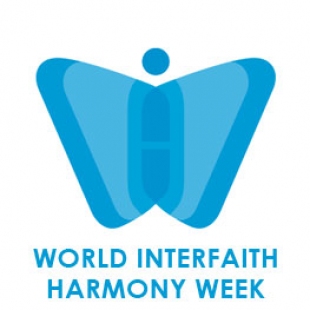The first week of February of each year has been designated World Interfaith Harmony Week by the United Nations. First proposed in 2010 by HM King Abdullah of Jordan, this new event aims to promote harmony among all people regardless of their faith. The official website is here.
World Interfaith Harmony Week seeks to spread the message of tolerance among the followers of all the world's religions, faiths, and beliefs. It does this by promoting the common basis of "Love of God and Love of the Neighbor, or Love of the Good and Love of the Neighbor." Its message invites everyone, excludes no one, and is purely voluntary. The objectives behind the World Interfaith Harmony Week, in the words of the author of the resolution, Prince Ghazi bin Muhammad, are:
1. To co-ordinate and unite the efforts of all the interfaith groups doing positive work with one focused theme at one specific time annually, thereby increasing their collective momentum and eliminating redundancy.
2. To harness and utilize the collective might of the world’s second-largest infrastructure (that of places of worship — the largest being that of education) specifically for peace and harmony in the world: inserting, as it were, the right "software" into the world’s religious "hardware."
3. To permanently and regularly encourage the silent majority of preachers to declare themselves for peace and harmony and providing a ready-made vehicle for them to do so. Moreover, if preachers and teachers commit themselves on the record once a year to peace and harmony, this means that when the next inter-religious crisis or provocation occurs, they cannot then relapse into parochial fear and mistrust, and will be more likely to resist the winds of popular demagoguery.
Here are some ways you can "name these days."
 Personal Explorations
Personal Explorations
Make a Gesture of Friendship to Someone of Another Tradition: This might be an invitation to a shared meal, a multifaith gathering, or a card of appreciation to a faith leader or anyone you admire from another tradition. Share stories with your friends about memorable encounters you've had with people from different faith traditions. Here are more activities anyone can do to emphasize the power of relationships and the value of every person's contribution.
 Books
Books
Check out 100 Multifaith Resources: This is S&P's annotated bibliography of the best books (with links to our full reviews) available on the subject of intentional interaction of people of different religious traditions. Whether you call it multifaith, interfaith, or interspiritual, the goal is the same: sharing, dialogue, and collaboration.
 Films
Films
Watch Baraka on DVD: With its breathtaking cinematography and mesmerizing music, this classic documentary delivers an unforgettable collection of snapshots from the global family album. Startling, powerful, and moving /uploads/features/images portray the vastness and variety of nature, city life, sacred sites, rituals, and the shared distress of earth and humankind. Through the scenes of Buddhists in their temples, Christians in their churches, Jews at the Western Wall in Jerusalem, Muslims in their mosques, and Hindus along the sacred river Ganges, we see the unity within diversity of religious communities.
